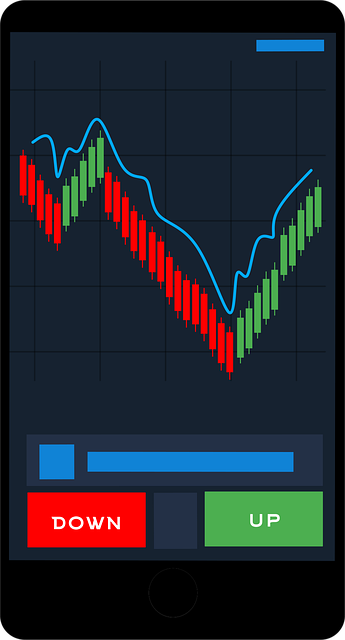What Are the Best Free Trading Platforms for Beginners and Pros?
Author: Jameson Richman Expert
Published On: 2025-11-02
Prepared by Jameson Richman and our team of experts with over a decade of experience in cryptocurrency and digital asset analysis. Learn more about us.
What are the best free trading platforms is one of the first questions new and experienced investors ask when they want to cut trading costs without sacrificing tools, security, or execution quality. This comprehensive guide compares top zero-commission platforms for stocks, ETFs, options and crypto, explains hidden costs to watch, suggests the right platform by user type, and links to authoritative resources and practical guides so you can choose and start safely.

Quick summary
This article covers the best free trading platforms across asset classes, the tradeoffs of "free" offers, platform features to prioritize (execution, research, mobile app, security, regulation), and step-by-step recommendations. You'll find case-by-case picks for beginners, active traders, long-term investors, and crypto traders, plus actionable tips to avoid hidden fees and protect your account. For crypto-specific strategies and platform tips, see the linked guides and exchanges below.
What “free” really means: zero commission vs. true cost
Zero-commission trading usually means no per-trade broker commissions for listed securities (stocks, ETFs, sometimes options). But “free” can still include:
- Spreads — price difference between bid and ask, often wider on less liquid instruments.
- Payment for order flow (PFOF) — brokers may route orders to market makers; this can affect execution quality.
- Exchange, regulatory or clearing fees — small pass-through fees sometimes apply.
- Margin interest, subscription fees, data fees — advanced data or margin borrowing cost money.
- Crypto spreads & withdrawal fees — many exchanges advertise “zero trading fee” but charge spreads or withdrawal fees.
Always check a platform’s fee schedule, order routing practices and user agreements — for more on exchange fees specifically, see this guide to EEX exchange fees in 2025: EEX exchange fees in 2025.
How to evaluate a free trading platform (checklist)
Before opening an account, compare the following:
- Regulation and safety: Is the broker regulated by reputable authorities? Does it provide SIPC/FSCS-style protection? Use FINRA BrokerCheck or the SEC investor resources to verify (see FINRA BrokerCheck and the SEC Investing education pages).
- Execution quality: Average trade execution speed and price improvement vs. quoted price.
- Range of assets: Stocks, ETFs, mutual funds, options, futures, forex, crypto — choose platforms that list what you need.
- Order types & tools: Limit, stop-loss, trailing stops, OCO, advanced charting, algorithmic/conditional orders.
- Research & education: Screeners, fundamental data, analyst reports, backtesting, paper trading.
- Mobile app & UX: Stability, features parity with desktop, notifications.
- Fees beyond commissions: Payment for order flow, margin rates, data subscriptions, deposit/withdrawal fees.
- Customer service & liquidity: Responsiveness and platform uptime during market stress.
- International access & tax reporting: Availability in your country and ease of tax document generation.

Best free trading platforms by category
Best overall (stocks & ETFs): Charles Schwab & Fidelity
Both Charles Schwab and Fidelity now offer $0 commissions for online U.S. stock and ETF trades, deep research libraries, strong customer support, and reliable trade execution. These brokers appeal to long-term investors and active traders who want robust research, tax reporting, and regulation-backed protections. For many investors looking for a full-service, no-commission solution, Schwab and Fidelity remain top picks.
Best for beginners & simple UI: Robinhood
Robinhood popularized commission-free trading with a very simple, mobile-first interface ideal for beginners. It offers stocks, ETFs, options and crypto. However, beginners should be aware of trade execution practices and limited advanced tools. If you need built-in education and a very low barrier to entry, Robinhood is a candidate.
Best for active traders & advanced tools: Webull and thinkorswim (TD Ameritrade)
Webull offers $0 commissions with advanced charting, extended-hours trading, and paper trading. TD Ameritrade’s thinkorswim (now integrated with Schwab) is the industry standard for advanced options analytics, backtesting, and live trading tools — free to use even if more sophisticated.
Best for low-cost international options: Interactive Brokers (IBKR Lite & Pro)
Interactive Brokers offers IBKR Lite with commission-free U.S. stock and ETF trades for U.S.-based customers and the full IBKR Pro for advanced traders who need global market access, sophisticated order types, and superior execution quality. IBKR is a great choice if you trade internationally or want institutional-grade order routing.
Best all-in-one for modern investors (cash management + investing): SoFi and Ally
SoFi and Ally combine banking features with zero-commission investing, making them good choices for investors who want integrated cash management, easy automated investing, and beginner-friendly interfaces.
Best for options traders: thinkorswim, Webull, and Robinhood
For options strategy and analytics thinkorswim is top-tier. Webull and Robinhood offer simple options trading with $0 commission per contract (but watch per-contract or regulatory fees in some regions).
Best free crypto trading platforms
Crypto markets differ: “free” often means low maker/taker fees, fee-free trading promotions, or zero trading fees but wider spreads. Below are well-known platforms used by retail traders, with recommended registration links where applicable.
- Binance — Very low fees, deep liquidity and a comprehensive product suite (spot, futures, staking). For new users consider registering through this link: Register on Binance. Also read practical Binance trading tips here: Practical Binance trading tips.
- Coinbase — Simple UX, higher fees but strong security and fiat on-ramps; good for beginners who value simplicity.
- Bybit — Competitive fees and derivatives; if you decide to use Bybit, register here: Join Bybit.
- Bitget — Strong derivatives options and copy trading features. Bitget users can register with this referral link: Register on Bitget. For tips on Bitget trade history and optimization see: Bitget trade history app.
- MEXC — Offers spot and derivatives with frequent promotions; sign-up here: Register on MEXC.
- Kraken — Strong security and fiat support, good for residents who prioritize compliance.
For beginners learning crypto trading strategies, read: Easy crypto trading strategies for beginners. Also verify local legality and licensing — see: Is crypto exchange legal in Canada — rules & how to use licensed platforms.
Platform-specific strengths and ideal users
Charles Schwab / Fidelity — Best for long-term investors
Strengths: Research, low-cost index fund access, human advisors option, strong regulation and customer service. Ideal for: buy-and-hold investors and retirement savers.
Robinhood — Best for mobile-first beginners
Strengths: Ultra-simple UX, fractional shares, crypto. Ideal for: new investors who want quick setup and basic features.
Webull — Best for active retail traders who want advanced charts
Strengths: Desktop and mobile advanced charting, paper trading, extended hours, low margin rates for retail. Ideal for: traders who want advanced tools without paying commissions.
Interactive Brokers — Best for international and professional traders
Strengths: Global market access, low margin rates for pros, superior routing. Ideal for: multi-asset and international traders.
thinkorswim (Schwab) — Best for options and derivatives analytics
Strengths: Options analytics, strategy backtesting, advanced order types. Ideal for: options traders and strategy testers.
Binance / Bybit / Bitget — Best for crypto traders
Strengths: High liquidity, derivatives, staking and yield products. Ideal for: experienced crypto traders comfortable with exchange risk and KYC processes. Register at Binance here: Binance registration, and keep the Bitget and Bybit links above handy.

Hidden fees and pitfalls to watch
Even on “free” platforms, you may encounter:
- High spreads during low liquidity or volatile markets — open limit orders to mitigate.
- Withdrawal or fiat deposit fees — crypto networks and banking partners may charge fees.
- Data or real-time quote fees — some platforms charge for real-time market data packages.
- Payment for order flow — may affect execution quality; see broker disclosures.
- Account inactivity or transfer-out fees — some brokers still apply these.
Tip: Compare the total cost of a trade (commission + spread + execution slippage) rather than focusing only on commission-free marketing.
Security, KYC and regulatory considerations
Choose only regulated platforms with strong security features: mandatory KYC/identity verification, insurance for fiat balances (e.g., SIPC in the US), segregated client assets (in EU/UK jurisdictions), cold storage for crypto, and mandatory 2FA (use hardware or authenticator apps). Verify broker registration with local regulators — for U.S. brokers use the SEC and FINRA resources; for other jurisdictions check national financial regulators.
Practical steps to start trading for free
- Define your goal: day trading, swing trading, buy-and-hold, options income, crypto speculation.
- Compare platforms using the checklist above and open 1–2 accounts to test them.
- Use demo/paper trading where available (Webull, thinkorswim) to practice without risk.
- Deposit a small initial amount and place simple trades to familiarize yourself with the UI and order types.
- Enable security: 2FA, withdrawal whitelists, strong passwords and hardware wallets for crypto.
- Track and review every trade: reason for trade, outcome, lessons learned. Consider trade journaling or analytics tools (for crypto see Bitget trade history tools linked above).

Sample comparison: Stocks/ETFs vs Crypto platforms
Here’s a practical side-by-side to illustrate tradeoffs when you choose “free” platforms.
Stocks/ETFs (example platforms)
- Charles Schwab — $0 trades, strong research, full service.
- Robinhood — $0 trades, simple UX, limited research.
- Interactive Brokers Lite — $0 trades on U.S. stocks/ETFs for some users, global markets for pros.
Crypto (example platforms)
- Binance — Very low fees, many products; requires careful KYC and security setup. Register here.
- Bybit — Low fees for derivatives; advanced traders only: Bybit link.
- Bitget — Copy trading and derivatives; register: Bitget link.
- MEXC — Good for altcoin listings and promotions: MEXC link.
Case studies & practical examples
Example 1 — Beginner investor choosing a platform
Sarah wants to start with $500 for long-term ETF investing and occasional stock buys. She values research and tax reporting. Recommendation: open accounts at Fidelity or Charles Schwab, enable fractional shares, and use automatic dividend reinvestment. Use paper trading or educational resources to learn before scaling up.
Example 2 — Active options trader
Raj requires advanced options analytics and backtesting. He chooses thinkorswim (Schwab) for strategy testing and order routing, using advanced order types and scanning tools. He keeps a second account at Interactive Brokers for international options and better margin rates.
Example 3 — Crypto trader focused on derivatives
Leila trades crypto futures and wants the best liquidity and low fees. She opens accounts on Binance and Bybit, funds with conservative position sizing, and uses Bitget analytics tools to review trade history. She follows the crypto exchange legal guidance for her country to remain compliant and understand custody risks (see the Canada legality guide linked earlier).
Tools to complement free trading platforms
Even when your platform is free, paid tools can be helpful depending on strategy:
- Charting & scanning: TradingView (free tier available), which integrates with many brokers.
- Backtesting & strategy development: thinkorswim, TradingView Pine scripts, or Python libraries for quant traders.
- Portfolio tracking: Personal Capital, CoinTracker for crypto tax and tracking.
- Educational resources: Investopedia, Coursera, and university finance courses (MIT OpenCourseWare).

High-authority resources to learn more
To deepen your knowledge use these trusted sources:
- U.S. Securities and Exchange Commission (SEC) — investor guides and brokerage disclosures.
- FINRA — BrokerCheck and investor alerts.
- Wikipedia — Online broker — for historical context and definitions.
- Investopedia — definitions and strategy tutorials.
Final recommendations — pick by your use case
- If you’re a beginner focused on long-term investing: Charles Schwab or Fidelity.
- If you’re a mobile-first beginner: Robinhood (but supplement with education about order execution and risk).
- If you’re an active retail trader: Webull or thinkorswim for advanced tools and paper trading.
- If you need global markets: Interactive Brokers.
- If you trade crypto actively: Binance, Bybit, Bitget or MEXC — be careful with security and local regulations; register links above and read the crypto strategy resources linked throughout.
How to avoid scams and unsafe platforms
- Never deposit to or trade from platforms without KYC or verified regulation in your jurisdiction.
- Be skeptical of “guaranteed returns” or “bots” promising constant profits.
- Keep funds you don’t actively trade in secure, regulated custody or cold storage (for crypto use hardware wallets).
- Use official exchange registration links from the platform site — avoid third-party installers or suspicious apps.

Useful next steps
- Decide your primary asset class (stocks, options, crypto).
- Open one demo/paper account and one live account to test. For crypto, consider registering on Binance: Binance registration, or the other referral links above for Bybit, Bitget and MEXC.
- Practice with small trade sizes, record your trades, and review performance monthly.
- Read targeted guides for more depth: crypto beginners guide Easy crypto trading strategies for beginners, exchange tips like Practical Binance trading tips, and platform analytics tools such as Bitget trade history app.
- Stay informed on fees and legal status for your region — e.g., crypto legal guides like Is crypto exchange legal in Canada and broader fee guides such as EEX exchange fees in 2025.
Final note: This article is educational and not financial advice. Compare platforms carefully, read fee schedules and regulatory disclosures, and consider consulting a licensed advisor for personalized guidance. When asking “what are the best free trading platforms,” the right platform depends on your goals, asset class, and risk tolerance — use this guide to make a data-driven choice and start safely.